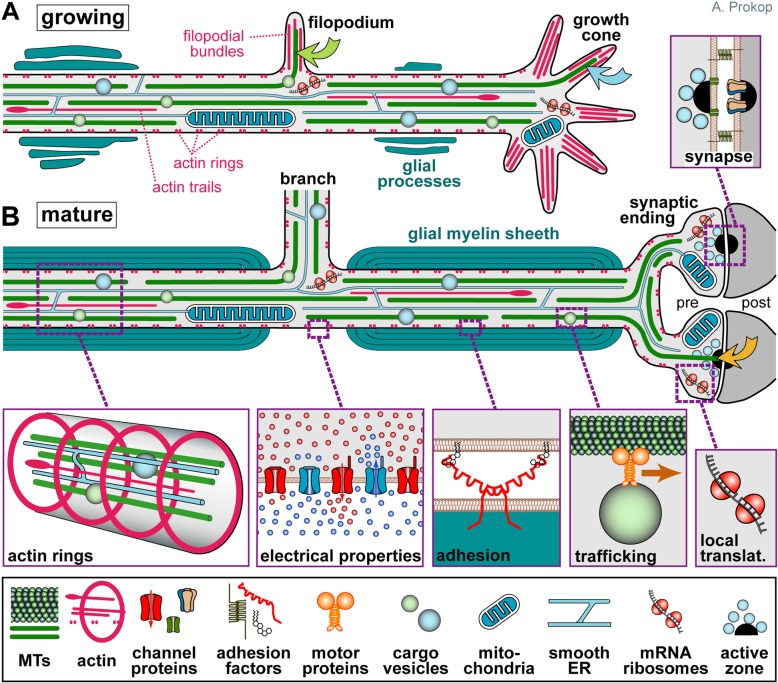Fig. 1.
Specific properties of axons. Axons during the growth cone stage are shown in (a) and after synaptic maturation in (b), differing primarily in certain stage-specific specialisations including growth cones, synapses, electrical properties and glial interactions (here myelination [389, 392]). The core machinery in the axon shaft can be expected to be similar at both stages: parallel continuous bundles of extended but discontinuous MTs run all along axons serving as a structural backbone (see Fig. 2), a transport highway for axonal trafficking (driven by motor proteins), and a source for 'off-track' MTs contributing to morphogenetic processes including branch formation, directed axon growth and synapse formation/plasticity (green, orange, blue curved arrows); MT bundles are interspersed with longitudinal actin trails [18, 24], continuous networks of (smooth) endoplasmic reticulum [44, 393], and other membranous organelles including mitochondria [45]; axonal membranes display regularly spaced periodic rings of cortical actin [20, 21], a high number of ion-specific channel proteins and transporters to conduct nerve impulses [394], as well as adhesions with external structures including fasciculating parallel axons (not shown), glial processes [395] and synaptic partner cells [396]; a degree of independence from cell-body derived proteins is provided by local translation machinery [397–399] or supply from surrounding glia cells (not shown; [400–403]). Note that the axon diameter in the region between glia cells in B (referred to as Node of Ranvier) usually has a much smaller diameter than the rest of the axon [1]

